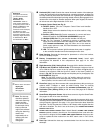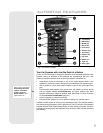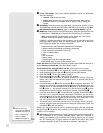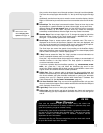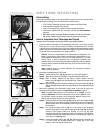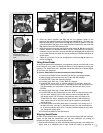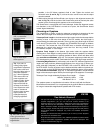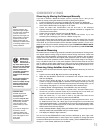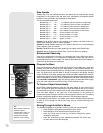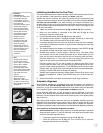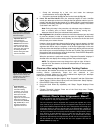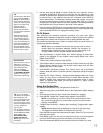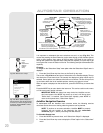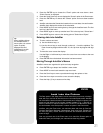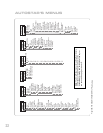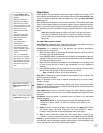
16
Slew Speeds
AutoStar has nine slew speeds that move the optical tube at rates that are directly
proportional to the sidereal rate and have been calculated to accomplish specific
functions. Press the Number key to change the slew speed.
The nine available speeds are:
Number Key 1 = 1x = 1 x sidereal (0.25 arc-min/sec or 0.004°/sec)
Number Key 2 = 2x = 2 x sidereal (0.5 arc-min/sec or 0.008°/sec)
Number Key 3 = 8x = 8 x sidereal (2 arc-min/sec or 0.033°/sec)
Number Key 4 = 16x = 16 x sidereal (4 arc-min/sec or 0.067°/sec)
Number Key 5 = 64x = 64 x sidereal (16 arc-min/sec or 0.27°/sec)
Number Key 6 = 128x = 30 arc-min/sec or 0.5°/sec
Number Key 7 = 1.0° = 60 arc-min/sec or 1.0°/sec
Number Key 8 = 1.5° = 90 arc-min/sec or 1.5°/sec
Number Key 9 = Max = approx. 4.5°/sec
Speeds 1, 2 or 3: Best used for fine centering of an object in the field of view of a
higher power eyepiece, such as a 9mm eyepiece.
Speeds 4, 5 or 6: Enable centering of an object in the field of a low-to-moderate
power eyepiece, such as a 26mm.
Speeds 7 or 8: Best used f
or rough centering of an object in the SmartFinder.
Speed 9: Moves the telescope quickly from one point in the sky to another.
Astronomical Observing
Used as an astronomical instrument, your telescope has many optical and electro-
mechanical capabilities. It is in astronomical applications where the high level of
optical performance is readily visible.The range of observable astronomical objects is
limited only by the observer’s motivation.
Observe the Moon
Point your telescope at the Moon (note that the Moon is not visible every night) and
practice using the Arrow keys and the slew speeds to view different features. The
Moon contains many interesting features, including craters, mountain ranges and fault
lines. The best time to view the Moon is during its crescent or half phase. Sunlight
strikes the Moon at an angle during these periods and adds a depth to the view. No
shadows are seen during a full Moon, making the overly bright surface appear flat and
rather uninteresting. Try using a neutral density Moon filter when observing the Moon
(see
OPTIONAL ACCESSORIES, page 42). Not only does it cut down the Moon's bright
glare, but it also enhances contrast, providing a more dramatic image.
To Track an Object Automatically
As the Earth rotates beneath the night sky, the stars appear to move from East to
West. The speed at which the stars move is called the sidereal rate. You can setup
your telescope to move at the sidereal rate so that it automatically tracks (follows) the
stars and other objects in the night sky. If the telescope is not tracking an
astronomical object, the object will drift out of the eyepiece field of view. The tracking
function automatically keeps an object centered in the telescope’s eyepiece.
To automatically track objects, you need to learn how the AutoStar keypad operates
in order to move through its menus. You'll also need to initialize and align your
telescope.
Moving Through AutoStar’s Menus
The AutoStar database is organized in levels for quick and easy navigation.
• Press ENTER to go deeper into AutoStar's menu levels.
•
Press MODE to mo
v
e back toward the top menu level.
• Press the Scroll keys to move up and down through the options
available for each level.
•
Press the Arro
w k
e
ys to enter characters and digits. The Arrow keys
are also used to move the telescope.
Tip:
When m
ultiple choices are
available within an
A
utoStar Men
u option, the
current option is usually
displayed first and high-
lighted b
y a r
ight pointing
Enter
Mode
Arrow
keys
Number
keys
Scroll
keys
Help
Go To
Fig. 21: AutoStar keys.



